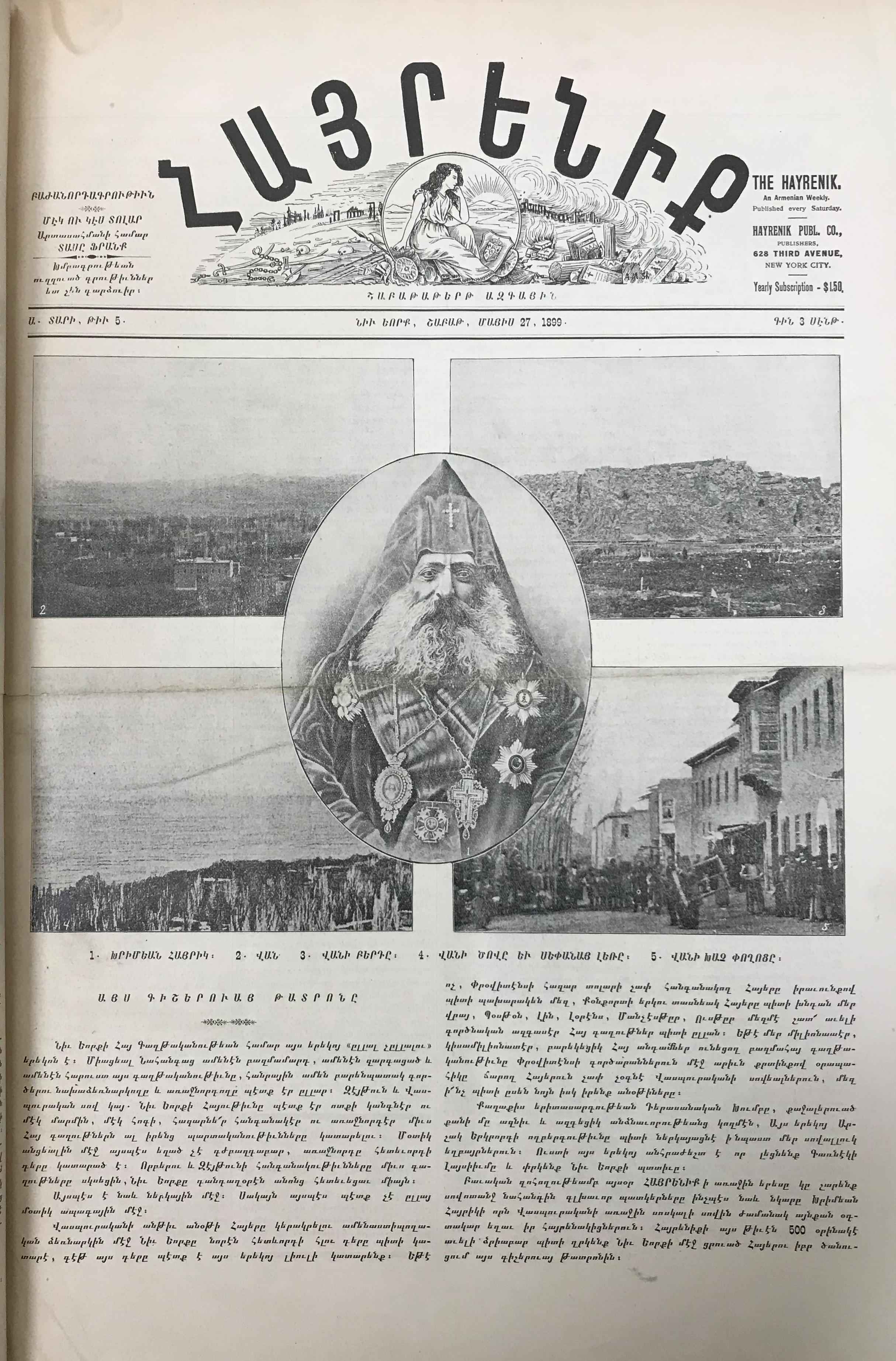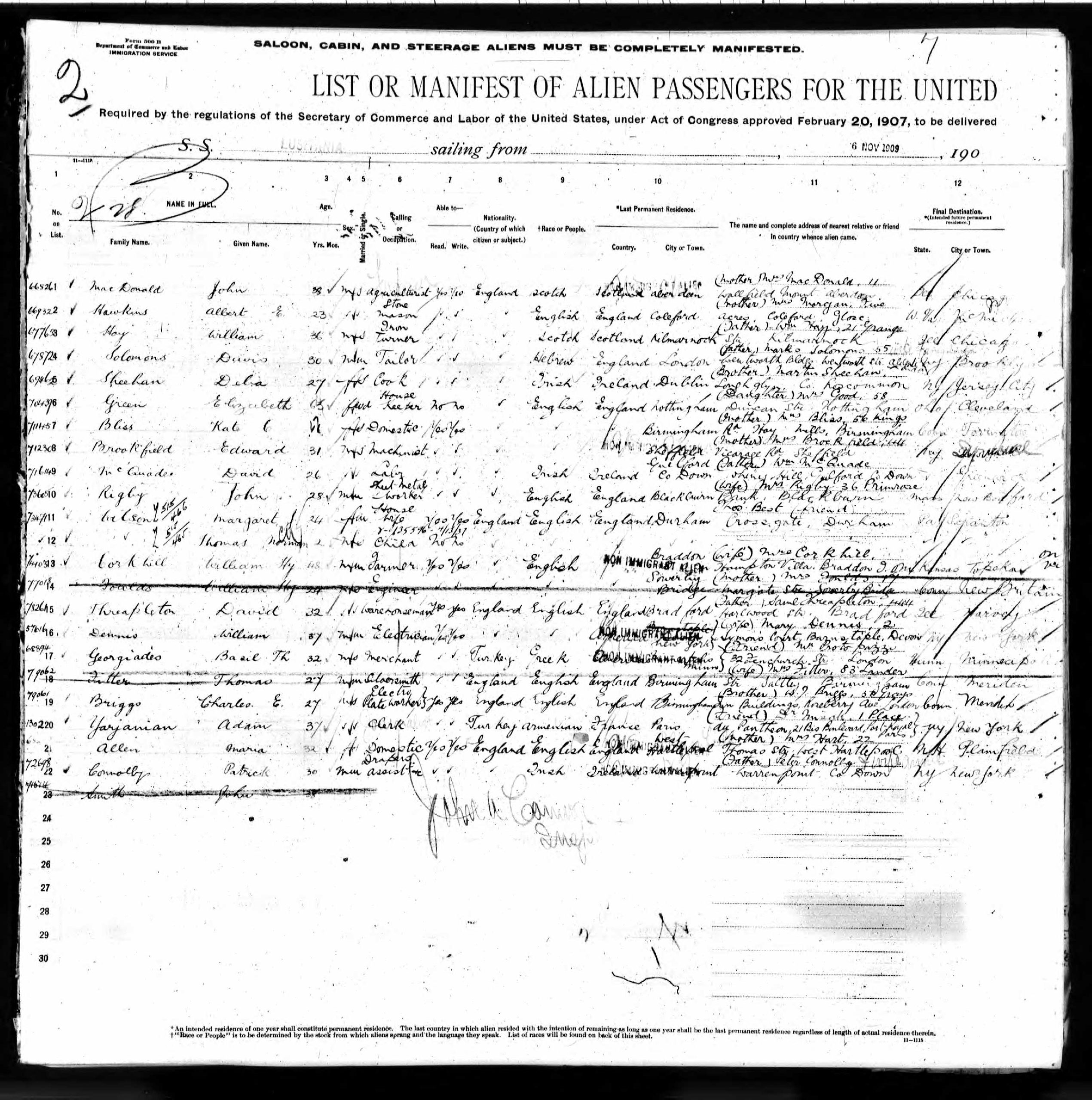From the December 2019 Special Anniversary Magazine Dedicated to the 120th Anniversary of the Hairenik and the 85th Anniversary of the Armenian Weekly

The storied history of the Hairenik is not just as a witness to the history of the Armenian people over the last 120 years, but as a participant. This is not hyperbole. The Hairenik has served as a community newspaper in its core definition of local engagement. However, it has surpassed that humble objective through the extent of its content for more than a century.
The birth of the Armenian press in America was a result of growing immigration to the United States. As the number of Armenians reached a critical mass and the community became more permanent with the arrival of women, the publication of newspapers was to be expected, particularly by political parties that had the network to supply news from the homeland. Outside of local business advertising, much of the initial content was international in focus and specific to the plight of Armenians from whence they had come versus where they had arrived.
Even before a single issue of the Hairenik was ever printed, the first editorial was read by Margos Der Manuelian to a small group in Providence, R.I. That year, the Armenian Revolutionary Federation (ARF) convention allocated $100 toward the publication of the newspaper. Der Manuelian would later become an editor of the Hairenik as well as secretary to the ARF Central Committee.
The Hairenik newspaper was born May 1, 1899, in the backroom of Hagop Goomrigian’s tailor shop at the corner of 3rd Avenue and E 41st Street in New York City. The original building has long been replaced, but the Hairenik is now the oldest continuously operated Armenian newspaper in the United States.
“This broken down, wooden structure of one story was not one of the boasts of wealthy and beautiful New York … was to become the manager of Armenian American journalism–the birthplace of the Hairenik.” -Thomas Charshafjian
The original masthead of the Hairenik is signed with the initials A. M. Sh. in English. The image contains Mother Armenia, chains and shackles, skulls and swords and burning books with the sign of the cross. The name of the illustrator is unknown to me. This masthead was used for the first two years when a slightly altered one began without attribution.
The first issue lists a price of three cents. The paper was published weekly on Saturday and a yearly subscription could be had for $1.50. These prices would stay in place for a decade, though the imagery of Mother Armenia on the original masthead had been replaced by simple text years earlier.
Before the first month of publication was complete, there arose a need to financially assist the Armenians of Van. The Hairenik published its first images toward that end. The front page of the May 27, 1899 issue contained four photographs of Van city, the Van fortress, Lake Van with Mt. Sipan in the background and a gathering on Khach Street in Van. The four photographs surrounded the image of Khrimian Hayrig, at the time Catholicos of All Armenians and previously the Prelate of Van.

The Hairenik slowly began to take shape with the arrival of Arshag Vramian (born Onnik Derdzakian), who managed to take on nearly every responsibility: editor, manager, secretary, accountant, proofreader, paper-folder, and typesetter. According to the 1900 U.S. census, Vramian arrived in July 1899 and immediately began work for the Hairenik. To all those who have worked at the Hairenik or been fortunately privy to those efforts, such dedication and sacrifice should be of little surprise. He would remain in the U.S. until 1907.
After returning to the Ottoman Empire, Vramian became a deputy in the parliament representing the region of Van. As a leader of the ARF in Van, Turkish officials at the outset of the genocide targeted Vramian for assassination. Vramian was last seen after having been summoned to a meeting with Cevdet Bey. He was murdered soon thereafter.
Vramian was not the only editor of the Hairenik to be murdered during the genocide. In fact, in a further testament to the quality of editorship in these early days and its wider influence within Armenian society, four Hairenik editors, as well as others associated with the production of the newspaper, returned to the Ottoman Empire only to be murdered as part of the genocidal plan of the Turkish authorities.
Aram-Ashod (born Sarkis Minasian) was another early editor of the Hairenik. While in the U.S. only for a short time, nonetheless Aram-Ashod made his mark. He also would return to the Ottoman Empire and was arrested on April 24. He would spend time in the Ayash prison before being murdered during transport to Diyarbakir.

The famed Armenian poet Siamanto (born Adom Yarjanian) arrived in the U.S. on November 12, 1909, aboard the infamous SS Lusitania. The sinking of the Lusitania in 1915 would shift public opinion in the U.S. in regards to involvement in World War I. Siamanto’s arrival was soon after the April 1909 Adana massacres which had impacted him so emotionally. He would spend less than two years at the Hairenik. Siamanto returned to the Ottoman Empire and suffered a similar fate as Aram-Ashod. He was arrested on April 24, imprisoned at Ayash and ultimately murdered.

During these days, through the work of such a pantheon of Armenian journalism and revolutionary spirit, the quality, quantity and importance of the output by the Hairenik were nothing short of miraculous given the limited financial and human resources available. The high standard thus set, future contributors raised the prestige of the Hairenik to even greater heights with the addition of the Hairenik Amsagir, the Armenian Weekly (originally the Hairenik Weekly) and the Armenian Review.
Understanding the tremendous legacy of the Hairenik, Vigen Der Manuelian, a relative of the previously mentioned Margos Der Manuelian and whose family had shown tremendous loyalty and sacrifice for its numerous publications over its entire existence, approached Rupen Janbazian, then editor of the Armenian Weekly, about a project to digitize the archives.
Over the course of the next few months, Rupen and I met numerous times with Vigen, whose idea crystallized and gained momentum. In his great generosity and commitment to the Hairenik, Vigen put up the seed money for the project.
The project was not insignificant, and it took a trained hand to perform the time consuming and delicate task of digitizing the newspapers that had been printed largely on acidic paper and were in a crumbling state. In truth, if the job had not begun soon, the opportunity to do so may have passed forever. As good fortune would have it, the right person for the job existed in our community in the person of Berge Panosyan. In fact, Berge had proposed the project a number of years earlier, but the opportunity had not existed.
The next challenge to overcome was what newspapers would be used for the process. At the Hairenik, we have an original complete set of the newspapers. But it is a collection we would be hard-pressed to part with, even for this noble effort. Fortunately, reflecting again on the wisdom and far-sightedness of those who came before us, stored in a trailer at AYF Camp Haiastan was a large collection of unbound newspapers, perfect for our purpose of scanning.
Over the last 18 months, Berge and his team have been tirelessly digitizing and creating searchable documents from the duplicate newspapers. So far, 1905 to 1920 and 1938 to present have mostly been complete for both the Armenian and English versions of the newspaper. Unfortunately, the web infrastructure has not progressed as smoothly or quickly enough to allow access to the digitized copies yet. But we are committed to making them available for a nominal annual fee.
The next batch of newspapers will include from inception in 1899 through 1905, thus completing the first 20 years of publication. The difficult years will be from 1921 to 1937 as we only have a single bound copy for these years. A decision will need to be made on whether to jeopardize these copies for digitization if a duplicate copy cannot be acquired.
The good news is that we do not plan to stop there. Once the newspapers are complete, the digitization of the Hairenik Amsagir will soon follow. I can envision the digitization of other Hairenik publications as well.
From the very beginning, the Hairenik operations employed the most state of the art technology available. Today, we continue to carry that tradition. The digitization is only one aspect of this. The print versions of the newspapers still reflect the willingness to evolve. As the renovation of the Hairenik fourth floor nears completion, we will begin work on a multimedia room. Video and audio recording, not just for the newspapers but also for our family of organizations, will be made possible in the state of the art studio.
The ARF Eastern U.S. Central Committee and all of the employees, contributors and supporters of the Hairenik understand the proud legacy of the past 120 years and the responsibility to carry that tradition to a bright future.


Be the first to comment